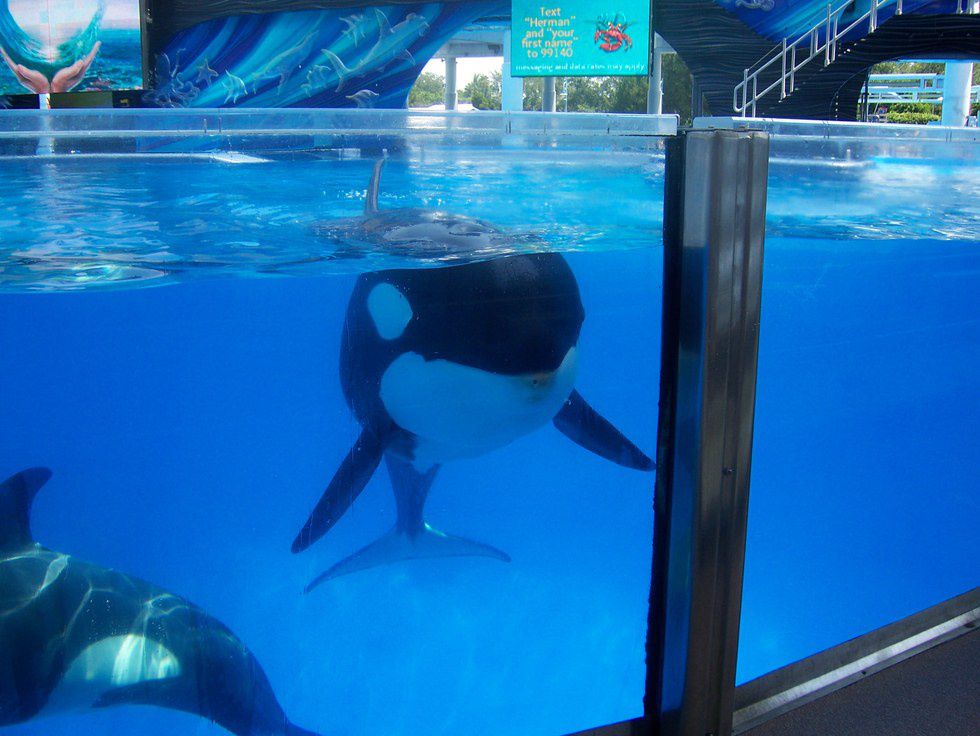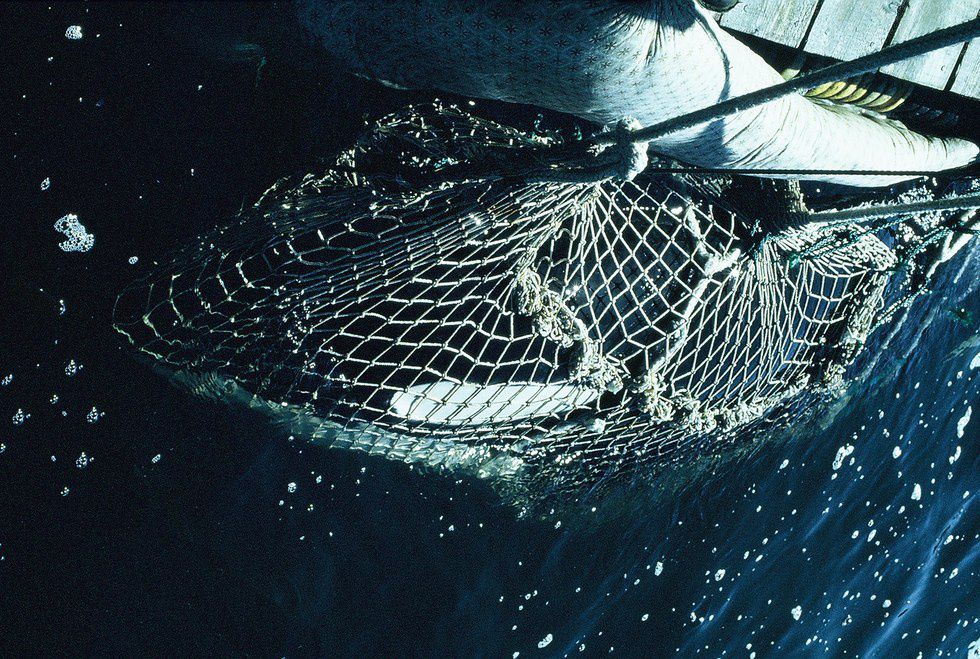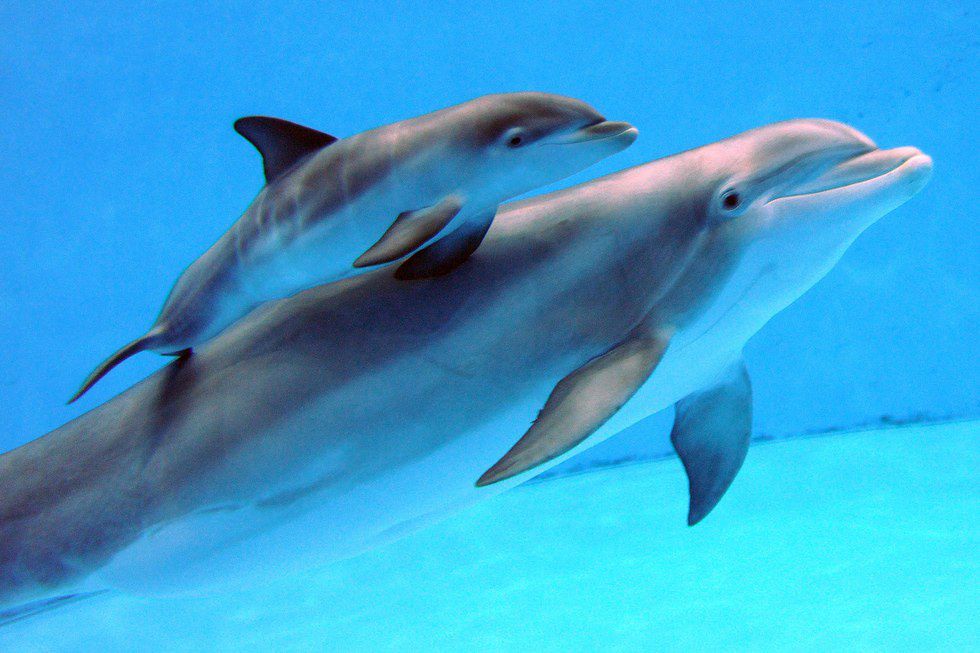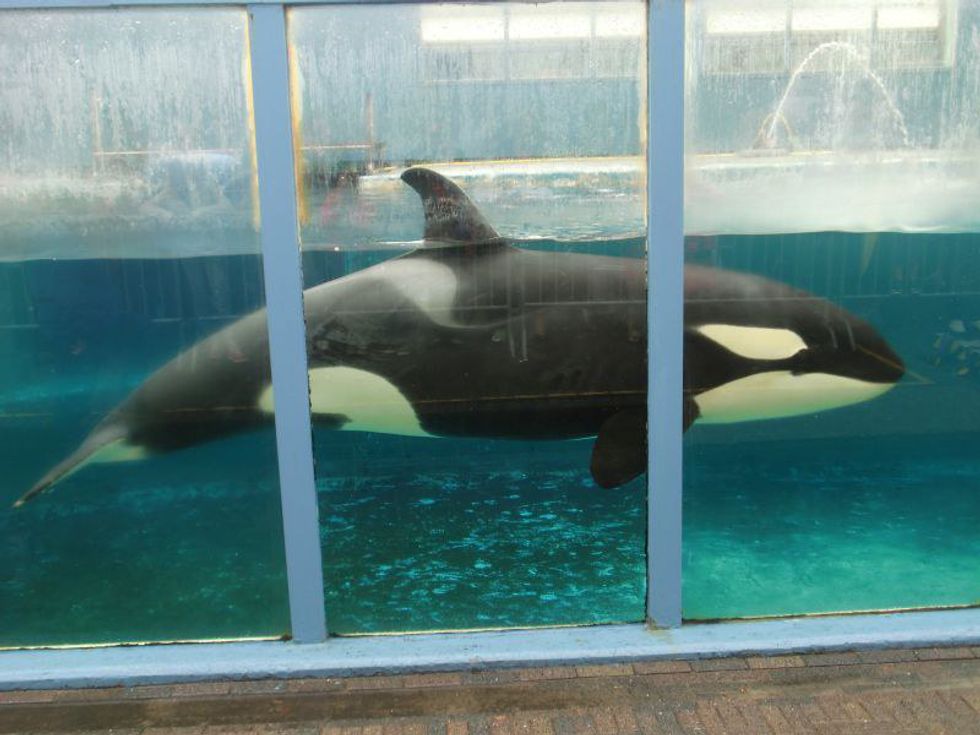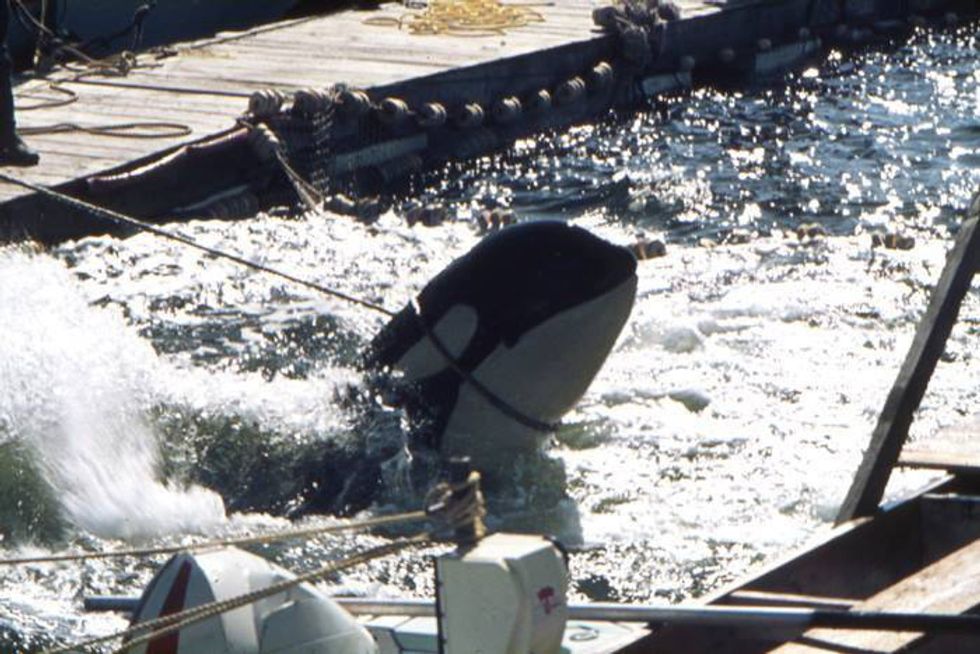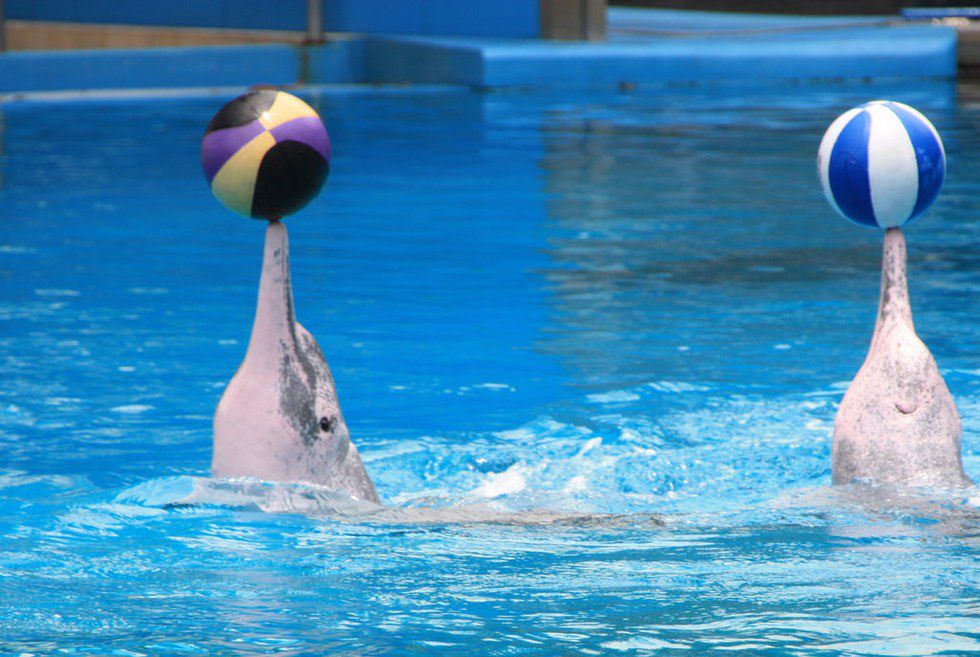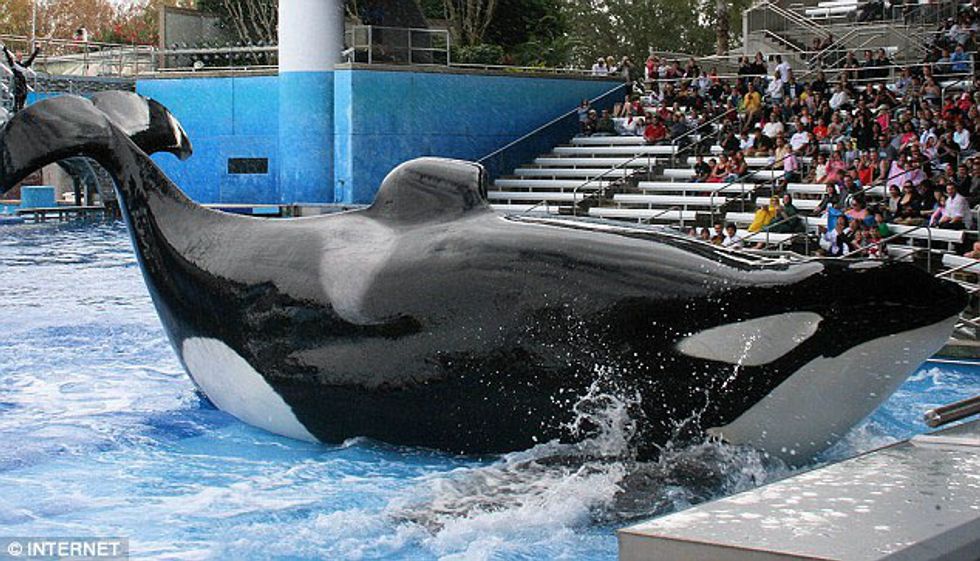So I totally understand why aquariums, sea-parks, and zoos can be a fun date idea or nice for a day trip with friends, but have you ever considered how the animals in those tanks and enclosures feel? The ways aquariums treat these animals is absolutely disgusting and here are some reasons as to why I don't support them.
1. The size of the enclosures
Especially when it comes to larger animals, such as orcas, the size of the tanks that they're put in can be a huge issue. In the wild, orcas generally dive up to 1,000 feet deep into the ocean. In places like SeaWorld, the tanks are only 35 feet deep. Also while in the wild, orcas swim up to or more than 100 miles in a single day. The enclosures that these beautiful creatures live in are only 0.07 miles long, so in order for them to swim 100 miles a day, they would have to do laps back and forth about 1,500 times.
Dolphins often travel hundreds or thousands of miles in a single day and they are constantly on the move.
2. Families are torn apart
Aquariums generally like to find animals who are younger in age, meaning babies. In order to capture the babies, people called 'sea cowboys', who are much like fishermen, will murder the innocent parents of babies, just to make it easier on themselves. With bigger animals,(such as poor orcas once again), divers will slit their bellies, fill them with rocks, and tie anchors around their tails so nobody will find them.
If animals give birth while in aquariums, mother and baby are almost always separated and put in different tanks, and sometimes, the babies are shipped off to different aquariums or sea parks.
Orcas, who live and travel in their family units for the entirety of their lives, develop their own languages to communicate with each other. No two orca families have the same language. This is a huge problem when these animals are put in captivity because sometimes orcas from different families are put in to the same tanks. This can cause the orcas to become aggressive and to fight each other because they all speak different languages and cannot understand each other.
Just like orcas, dolphins live in pods, which are family units, and they each have their own language and own culture. Dolphins are also sometimes put in tanks that contain dolphins from different pods, which causes them to be confused, aggressive, depressed, and anxious
3. Animal Intelligence
Many animals are more intelligent than humans actually realize. Orcas are actually considered to be the smartest animals in the world. Animals like dolphins, who are "large-brained, cognitive animals" are literally trapped when put into enclosures. Dolphins live in complex societies in the open ocean. Their large brains allow them to develop these complex and fluid societies in which they can flourish in their ocean homes. Dolphins have flexible and utterly amazing social and communicating skills. Since they are so socially and emotionally intelligent, dolphins can also mourn the loss of a pod member for their entire life.
4. Reproduction and breeding
In the wild, orcas mate for life. They pick their own partners, have babies, and the family stays together for life. In captivity, male orcas are masturabated, trainers collect their semen, and they then forcibly inseminate female orcas in order for them to give birth.
Reproduction is also extremely difficult for dolphins in enclosures. To replenish the dolphin supply, aquariums are constantly looking for dolphins to capture in the wild.
5. Life expectancy
In the wild, male orcas generally live as long as 50 or 60 years, whereas female orcas can live up to 100 years or longer. In captivity, aquariums like to tell tourists that these animals have shorter life expectancies than they actually are because of the age they die while in captivity. The SeaWorld website says that the average life expectancy for male orcas is 17 years, while female orcas live up to 29 years.
In the wild, different species of dolphins can live anywhere from 50-60 years, whereas in captivity, that lifespan is cut in half.
6. Animal Behavior
The reason why there are so many documented (and undocumented I'm sure) cases of orca aggressiveness is because these animals are simply not meant to live in captivity. I guess that's a hard aspect for some people to understand. There have been over 150 documented cases of human deaths and injuries due to orcas.
Orcas can also become extremely depressed and anxious while in captivity, since they are extremely family-oriented animals. Some usually become so depressed because they are in small tanks alone, and cannot interact with other animals, like they do in the wild. There are orcas at SeaWorld that haven't seen another orca in upwards of 40 years. When orcas communicate, the sound waves of their voices will continually bounce off the walls of the enclosures and can cause these beautiful animals to be driven to the brink of insanity.
Both dolphins and orcas in captivity alike are controlled by food. These animals are rewarded with food (disgusting food that they normally wouldn't eat, that is) when they do 'tricks'. These animals are fed pig and cow bones and thawed dead frozen fish, and not in correct amounts either. Dolphins eat up to 25 kg or about 2 pounds of fish each day, and are only rewarded a few fish for doing tricks. Orcas need from 150-300 pounds of fish per day, and you can bet that aquariums can't keep up with that amount of feed.
7. Injury
In the wild, less than 1% of orcas have collapsed dorsal fins. In captivity, every single male orca has a collapsed dorsal fin. There are many reasons as to why this is;
Since the tanks are not deep enough, orcas like to float listlessly at the top of the tank, not only exposing them to sunburns, but not giving their dorsal fins the support they would have if they were under the water as well.
Diet, fitness, medications, dehydration, stress, and the chemicals used in the water also contribute to dorsal collapse.
Many aquariums also do not have the resources to rehabilitate these animals. Many equipment is old and outdated, rusty, dirty, or these aquariums simply just don't have them.
In regards to the sunburns on orcas, trainers cover up these massive sunburns with something called black zinc oxide, which is a conversion coating used on metals. They basically paint over the sunburns so they don't damage the 'aesthetic' of the whale.
There are hundreds of more reasons why you shouldn't support aquariums, but I hope these 7 reasons gave you some perspective. And I hope you think twice next time you think about paying for an animal to live a life of misery just so you can have one day of fun.




